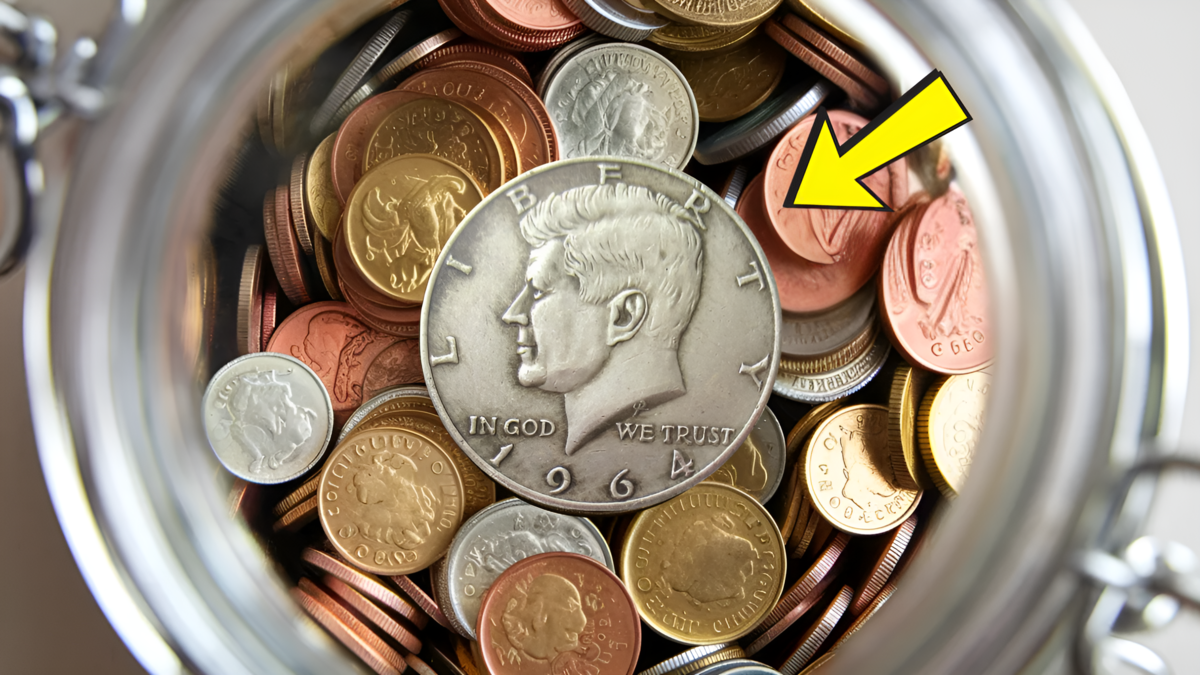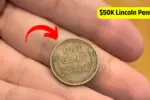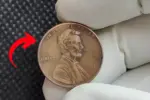The world of collectibles is full of surprises, and every now and then, a discovery comes along that captivates enthusiasts and experts alike. One such story has recently emerged, involving a sealed mason jar and a rare penny that has sent shockwaves through the numismatic community. This extraordinary find not only highlights the thrill of collecting but also serves as a reminder that treasures can be hidden in the most unexpected places.
Let’s dive into the details of this remarkable discovery, the history behind the rare penny, and its impact on the collecting world.
The Discovery: A Mason Jar Full of History
It all began when a collector stumbled upon an old, sealed mason jar at an estate sale. The jar, dusty and unassuming, was filled with coins that appeared to be ordinary pocket change. Intrigued by the possibility of uncovering something valuable, the collector decided to purchase the jar and examine its contents.
Upon opening the jar, the collector meticulously sorted through the coins, inspecting each one for signs of rarity or historical significance. Among the assortment of pennies, nickels, and dimes, one coin stood out a penny that looked different from the rest. Its unusual markings and pristine condition immediately caught the collector’s attention.
The Rare Penny: A Numismatic Gem
The penny discovered in the mason jar turned out to be a rare and valuable coin, known as the 1983 Doubled Die Reverse Lincoln Cent. This particular variety is highly sought after by collectors due to its unique mint error, which results in visible doubling on the reverse lettering. The words “ONE CENT” and “UNITED STATES OF AMERICA” appear doubled, creating a striking visual effect.
Key Features of the Rare Penny:
- Year: 1983
- Type: Lincoln Cent
- Mint Error: Doubled Die Reverse (DDR)
- Composition: 97.5% zinc, 2.5% copper plating
- Weight: 2.5 grams
- Mint Mark: None (Philadelphia Mint)
The rarity of this coin lies in the minting process. The doubling occurs when the die used to strike the coin receives multiple impressions, resulting in the distinctive error. While billions of pennies were minted in 1983, only a small number of doubled die reverse varieties exist, making them highly valuable to collectors.
The Impact on the Collecting World
The discovery of the rare penny has sparked excitement and curiosity among numismatists and hobbyists. News of the find quickly spread through online forums, social media, and collector communities, with many marveling at the serendipity of uncovering such a treasure in a sealed mason jar.
Why This Discovery Matters:
- Renewed Interest in Coin Collecting:
Stories like this inspire both seasoned collectors and newcomers to explore the world of numismatics. The idea that valuable coins can be found in everyday places adds an element of adventure to the hobby. - Increased Awareness of Mint Errors:
Mint error coins, such as the 1983 Doubled Die Reverse Lincoln Cent, are fascinating examples of how imperfections can become prized collectibles. This discovery highlights the importance of examining coins closely for unique features. - Market Impact:
The rarity and demand for the 1983 DDR penny have led to increased interest in similar coins, driving up their value in the market. Collectors are now more eager than ever to search for hidden gems in their own collections.
The Collector’s Journey
The individual who discovered the rare penny, a part-time hobbyist named Mark Daniels, shared his story with the numismatic community. Mark had been collecting coins casually for years, often searching through rolls of pennies from the bank in hopes of finding something special. His dedication and attention to detail paid off when he spotted the unusual doubling on the reverse of the 1983 penny.
Mark sent the coin to a professional grading service, where it was authenticated as a genuine 1983 Doubled Die Reverse Lincoln Cent in Mint State (MS65) condition. The coin’s high grade further added to its value, and it was eventually sold to a private buyer for an impressive $24,000.
Lessons from the Discovery
The sealed mason jar discovery offers valuable lessons for collectors and enthusiasts alike. Here are some key takeaways:
1. Pay Attention to Details
Rare coins often go unnoticed because their unique features are subtle. Taking the time to carefully examine coins can lead to incredible finds.
2. Explore Unconventional Sources
Treasures can be hidden in unexpected places, such as estate sales, flea markets, or even jars of loose change. Keeping an open mind and exploring unconventional sources can yield surprising results.
3. Invest in Knowledge
Understanding the characteristics of rare coins, such as mint errors and historical significance, is essential for identifying valuable pieces. Resources like coin guides, online forums, and professional grading services can help collectors expand their knowledge.
4. Preserve and Protect
Once a rare coin is discovered, it’s important to handle it with care and store it properly to maintain its condition and value. Using protective sleeves or cases can prevent damage and ensure long-term preservation.
The Thrill of Collecting
The story of the sealed mason jar and the rare penny is a testament to the excitement and unpredictability of collecting. Whether you’re a seasoned numismatist or a casual hobbyist, the thrill of uncovering something extraordinary is what makes the pursuit so rewarding.
As Mark Daniels’ journey shows, incredible finds are still out there, waiting to be discovered. With curiosity, patience, and a keen eye, anyone can experience the joy of turning an ordinary object into a treasured piece of history.
Final Thoughts
The sealed mason jar discovery has captured the imagination of collectors around the world, reminding us that treasures can be hidden in the most unlikely places. The rare penny found within a 1983 Doubled Die Reverse Lincoln Cent serves as a symbol of the endless possibilities that await those who explore the world of numismatics.
As the collecting community continues to celebrate this remarkable find, one thing is clear: the thrill of discovery is alive and well. Whether it’s a rare coin, an antique jar, or a forgotten relic, the joy of uncovering something unique is a universal experience that transcends time and place.
So, the next time you come across a dusty mason jar or a roll of coins, take a closer look you never know what treasures might be waiting inside.
FAQs
What rare coin was discovered in the mason jar?
The rare coin found was a 1983 Doubled Die Reverse Lincoln Cent, known for its distinctive doubling on the reverse lettering.
Why is the 1983 Doubled Die Reverse penny valuable?
It is valuable because of its mint error, rarity, and the visible doubling, making it highly sought after by collectors.
How did the collector find the rare penny?
The collector purchased an old sealed mason jar at an estate sale and discovered the rare penny while sorting through the coins.
How much was the rare 1983 Doubled Die Reverse penny sold for?
The authenticated penny, graded Mint State (MS65), was sold to a private buyer for $24,000.
What lessons can collectors learn from this discovery?
Collectors should pay attention to small details, explore unconventional sources, invest in numismatic knowledge, and preserve rare finds carefully.



